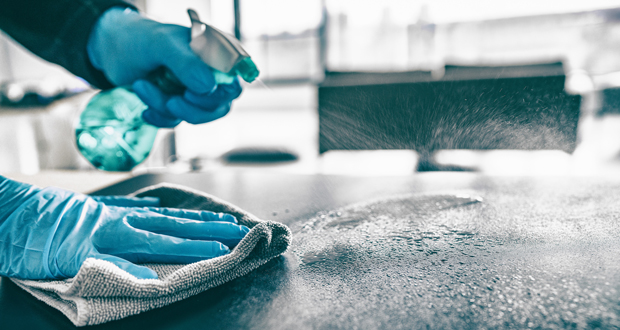 By Simon Giles, Chief Operating Officer, Axis Cleaning & Support Services
By Simon Giles, Chief Operating Officer, Axis Cleaning & Support Services
Cleaning has often had an image problem, but in a COVID-19 and post-COVID world that image is steadily changing. Whilst from the start of the crisis, cleaners were included as ‘essential workers’, it is doubtful whether many firms would have seen them as such pre-crisis, at least not in the commercial property space.
Whereas in certain industries such as pharma, food production, data centres etc cleaning is a key element of business continuity, and has high visibility, within an office environment, cleaners are often virtually invisible – a silent workforce that appears overnight to do their bidding. Unseen. Unheard. They are most unlikely to be part of any risk management strategy or planning. Until now.
Today there is a noticeable shift in businesses’ attitudes towards – and perception of – cleaning. Whereas previously cleaners would be arriving at work just after their customers had left, this is now beginning to change. Businesses now want to see their cleaning teams in operation, during the day, so much so that we may yet see a return of the day janitor. Far from being something in the background, some cleaners are even being asked to wear high-visibility jackets so that customers know exactly who they are.
Visible reassurance
Why is his happening? Primarily it is because Company Directors and Senior Management are keen to give their employees and visitors the perception and reassurance that their offices are clean, and not just clean but safe. They want to be able to visibly demonstrate their investment in a cleaner, more hygienic and safer working environment for a returning workforce.
And this is another important shift. It is no longer enough for an office to be ‘clean’ – the bins emptied, desks wiped, coffee mugs washed and put away; today the whole office has to be disinfected and sanitised. This in turn is leading to the adoption of new cleaning regimes focused on touchpoints – door handles, light switches etc – and the wider use of specialist chemicals and products such as Zoono, an anti-microbial shield sanitiser.
Water-based, alcohol-free products like Zoono significantly reduce the spread of harmful bacteria, viruses, fungi, mould and yeast. They ‘bond’ to a working surface and continue killing germs for anything up to 30 days after being applied.
Such chemicals, of course, are not a panacea. Their efficacy is still dependent on how often specific surfaces are ‘touched’. But they are part of a changing regime that is seeing cleaning companies promote different ‘layers’ of cleaning with strategies and cleaning programmes that move beyond a one-off office ‘deep clean’ into something more meaningful and ongoing, and that maintains a higher level of ‘clean’ on a more consistent basis.
Supporting technology
As well as new chemicals, new technology will also play its part. Tracking technology based on Near Field Communications (NFC) is already enabling cleaners in certain environments (e.g shopping centres) to better log their activities as they complete a task, with a level of detail that is instantly recorded for later review if required. Not surprisingly, some businesses are now looking at what such technology can do for them. Not only does it provide a complete audit trail of the work undertaken (in a more sophisticated and reliable way than a manual chart on the back of a toilet door), but it also helps protect the business against accidents and fraudulent insurance claims from spillages etc. Users are able to prove where and at what time a spillage was cleaned up versus the time and location of a claim.
Businesses can, and should, be more actively engaging with their cleaning providers, and hopefully this will be a legacy of the current crisis. Previous cleaning regimes will have to change. Social distancing has added a further tier of complexity that will challenge whether former specifications and plans are still appropriate with fewer staff and greater hot-desking.
Managers will need to better understand where and how a contamination risk is entering their building, and the necessary steps to keep their people safe. And cleaning firms will need to continue to invest in their own people, so that they are equipped with the skills and the tools and have the appropriate protection and support of management to work in the brave new world that awaits.
Whereas cleaning was previously seen as simply a necessary purchase, and one that could be commoditised, there is a real opportunity now for the true ‘value’ of cleaning and a professional cleaning workforce to be recognised.





